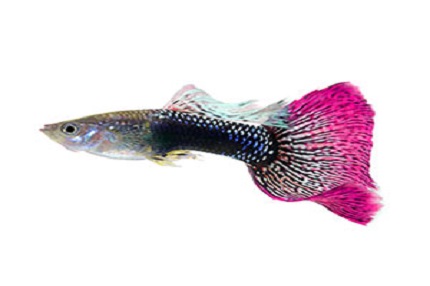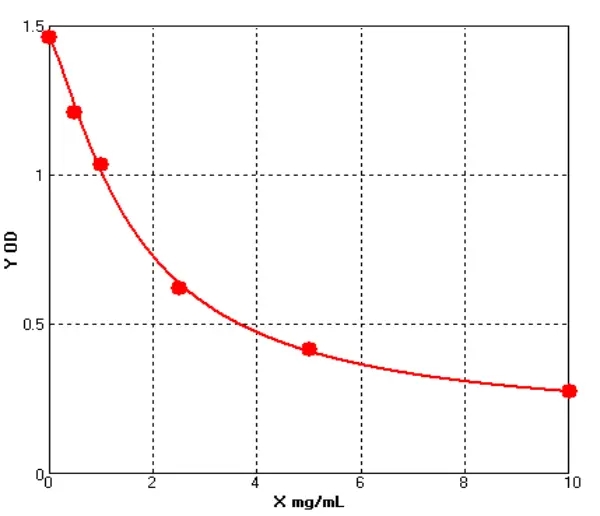FAQs
-
1 Questions for Storage
Is it possible to store the reagents other than indicated?
Storage of the kit components under conditions other than indicated is not recommended in order to assure proper performance of the test.
How should I store my samples?
Samples should be aliquoted and must be stored at -20°C (less than 3 months) or -80°C (less than 6 months) to avoid loss of bioactivity and contamination.
-
2 Qusestions for Samples
Do I have to run all of my standards and samples in duplicate?
Yes, the duplicates are run in order to monitor assay precision and increase confidence in the assay results obtained.
Do I have to run all of my samples at one time?
No, each kit uses stripwell microplate. This allows the user to analyse different numbers of samples at different times.
Can I use a sample type that is not recommended in the kit insert?
The kit has been validated for the sample types listed in the kit insert. Sample types other than those validated have not been tested. Contact Technical Service for further information.
My samples generated values that were outside the dynamic range of the assay. Can I use these values?
It is recommended that only sample values that fall within the range of the standard curve be used. Values outside the range of the standard curve are generally non-linear, which can lead to incorrectly extrapolated values. Samples that generate values higher than the highest standard should be (further) diluted and the assay repeated. If samples fall below the range of the assay, the sample is considered to be non-detectable.
Can I alter the volume of sample I use in the assay?
It is not recommended that you alter the volumes since all BG kits are designed for optimal performance at the given volumes.
If I extract my sample, do I still need to follow the recommended dilutions given in the kit insert?
The amount of sample dilution needed after an extraction procedure will be affected by the effects of purification and concentration in the protocol used. The amount of dilution or concentration will have to be determined by the end-user.
How to dilute the samples?
Please dilute your samples with PBS or physiology saline
Please explain why the customers dilutions do not show the expected trend?
Some ELISA kits are designed for the neat or low diluted samples.We suggest pre-experimenting with neat (undiluted) samples, 1:2 or 1:4 dilutions. Please avoid diluting your samples more than 1:10 as it would exceed the dilution limit set for this kit. Please contact our Technical Support for further information.
There is an optimal ratio of antigen-antibody binding. The linear relationship of ELISA detection is only applicable to a certain detection range.
If the undiluted samples are beyond the detection range, the diluted samples might give some false reading as some matrix interference occurred.
Why there is no signal when testing recombinant proteins by the ELISA kit?
Owing to the possibility of mismatching between antigen from other resource and antibody used in our kits (e.g., antibody targets conformational epitope rather than linear epitope), some native or recombinant proteins from other manufacturers may not be recognized by our products.
-
3 Questions for Standards/Standard Curves
What types of reproducible results are obtained with the assays?
Each kit comes with a manual containing a graph of typical data obtained. Any variation in operator, pipetting and washing technique, incubation time or temperature, and kit age can cause variation in result. Each user should obtain their own standard curve.
My standard curve looked fine, but I didn’t get a signal in my sample when I expected to, why?
The sample may not contain the analyte. A matrix effect may be masking the detection. Ensure that the recommended dilution was followed as stated in the kit insert. If dilution was recommended, check to be sure that the dilution was performed properly. Over-dilution may cause the sample to fall below the range of the standard curve.
What is the buffer in Standards?
The major component of the standards dilution buffer is PBS, 50% glycerol, 0.01% ProClin300.
Can I dilute the standards?
Some ELISA kits are equipped with ready-to-use Standards, it is not recommended to dilute them. However under the special experimental design, the customer could use standard A to dilute others.
Some of them are not diluted ahead, please refer to the manual and check with our salesman ahead for the final suggestions.
Do I have to run a Blank or Zero Standards every time?
Yes, these are required for the calculations, and reflect any subtle but significant performance changes from day to day and assay to assay. They are also extremely helpful when troubleshooting the source of a particular assay problem.
-
4 Questions for Operations
How do you recommend I wash my plate?
If you are using an automated plate washer we recommend that the calibration be checked on a regular basis, and that the system is flushed with the Plate Washing Buffer prior to washing. The same is true for a manual washer. A repeater or a wash bottle can also be used. The user should be careful to ensure that all of the contents are aspirated and the plate tapped dry on lint-free paper.
Do I need to use a plate shaker?
Reliable results can be obtained without a plate shaker, but the O.D.'s will generally be lower than those obtained using a plate shaker.
Why do I have to use wavelength correction between 450-570nm?
For the ELISA assay, reading at dual wavelengths is done to correct for the optical density contributed by the plastic well, the lamp and optical fluctuations.
My optical densities were a little higher (or lower) than those in the manual that came with my kit. Why?
The optical density is affected by a number of physical conditions such as time and temperature. We suggest that you shorten or lengthen the final incubation with substrate solution to compensate.
What are the reasons for High Background?
1) Improper Washing: Check volume of washing buffer reservoir and make sure all recommended washing steps are performed.
2) Contaminated Substrate: Make sure there is no contamination of the substrate with metal ions or oxidizing reagents, before use. Keep the extra substrate solution separately during the ELISA substrate development time.
3) Substrate exposed to light: Exposure to light may result in a blue color of the substrate. Keep solutions in the dark (vial) until ready to dispense into the plate.
4) Wrong Incubation Times/Temperatures: Generally follow the test protocol regarding incubation times and temperatures. However, if all wells are intensely and equally colored with no intensity gradient observed in the standard dilution series, then it may be necessary to observe the substrate reaction as the color is developing, in order to stop the reaction sooner.
How to prepare PBS?
Preparation of PBS: NaH2PO4 0.2g, Na2HPO4·12H2O 2.9g, NaCl 8g,KCl 0.2g. Then dilute these to 1000ml with distilled water.
-
5 Questions for the Components in the ELISA kit
Can components from different kits be used?
Each kit contains components which have specific lot numbers to ensure that all of the components are performing optimally alone, as well as with all of the other components in the kit. QC testing is performed on these specific lots. It is never recommended to use your own components or components from other kits or vendors.
What is the purified method of the antibodies in the ELISA kit?
The antibody is purified using the method of affinity chromatography.
What is the function of the Balance Buffer in the ELISA kit?
The balance solution is composed of some buffers and protein which are used to make the ingredients of cell lysate, tissue homogenates and some body fluid more similar to that of our standards. It is also used to reduce the interference of samples.
-
6 Other Questions
Can I modify the protocol?
BG ELISA kits have been optimized to provide the best possible results. Modifying the format or protocol may give inaccurate and wrong results.
How does hemolysis affect ELISA results?
Hemolysis samples will release Peroxisome. The color development of our ELISA kit is based on the reaction of HRP and substrates. So the released peroxisome will infect our assay.


